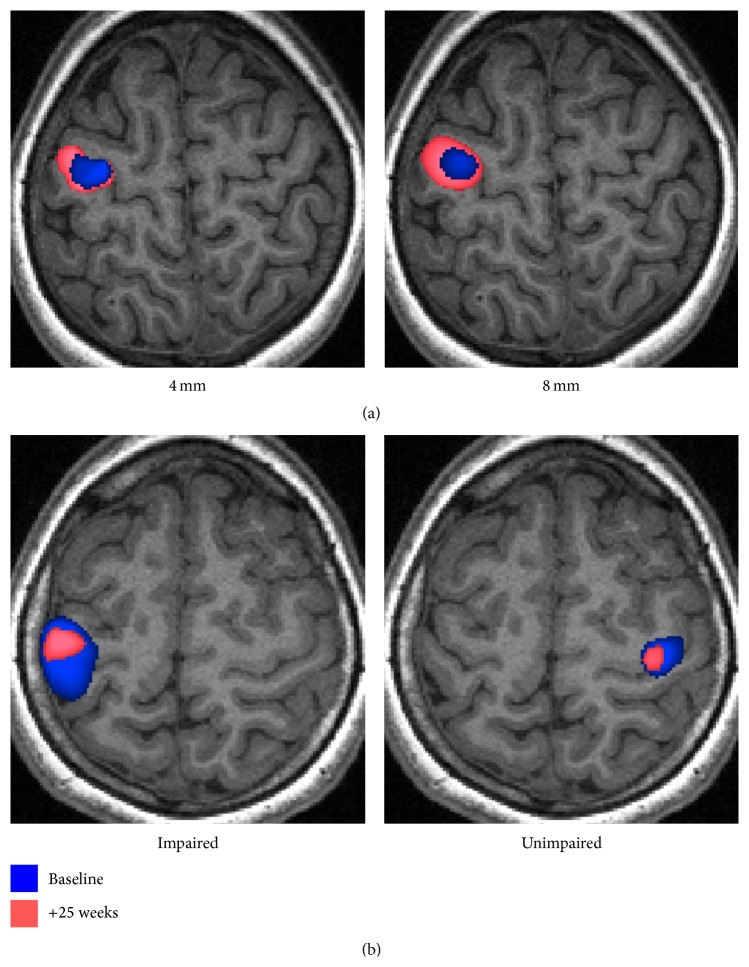Figure 2.
Voxel-wise fMRI analyses of a block-design hand-tapping task recorded at baseline (blue) and after ~25 weeks (pink). (a) A subject with chronic traumatic brain injury who underwent virtual reality therapy during the 25-week period. In the affected hemisphere, the 25-week scan showed a 2.2 times or 3.3 times larger activation volume than the baseline scan, depending on whether a 4 mm (left) or 8 mm (right) smoothing kernel was used. The 4 mm and 8 mm processing options were associated with peak voxel shifts of 8.6 mm and 5 mm, respectively. (b) A subject with cerebral palsy demonstrating large changes in activation between scans, for tapping of the impaired (left image) and unimpaired (right image) hands. The subject underwent no treatment during the 25-week period but was less anxious and followed the auditory cue marginally more accurately during the follow-up scans.

